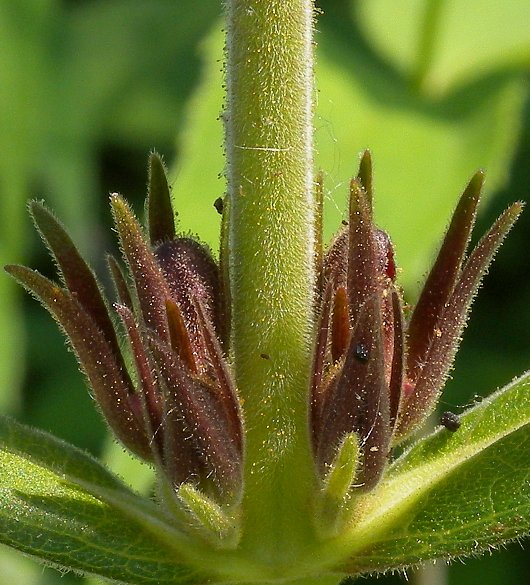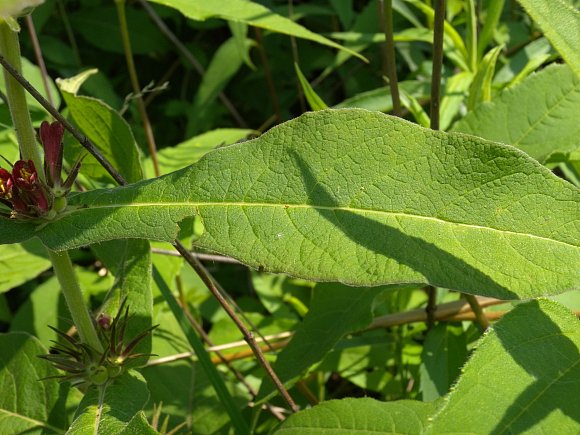
Each flower is ½-¾" long, consisting of of tubular corolla that is dull red to purplish red, 5 reddish green to reddish purple sepals, an inferior ovary with a single style, and 5 inserted stamens. Along its upper rim, the corolla has 5 short lobes that are rounded and erect. The sepals are about the same length as the corolla; there are linear in shape, short pubescent, and persistent. The style is about the same length as the corolla or slightly longer; it has a swollen green stigma at its tip. The blooming period occurs from late spring to early summer, lasting about 1-2 months. Only a few flowers are in bloom at the same time. Afterwards, the flowers are replaced by 3-celled fruits that become about ½" long at maturity. Mature fruits are orange to orange-red, ovoid-globoid in shape, and glandular-pubescent; their flesh is dry and mealy. Each fruit contains 3 bony seeds that are bluntly 3-angled and oblongoid in shape. The root system consists of a taproot.
Cultivation: The preference is light shade to partial sun, mesic to dry-mesic conditions, and soil containing loam, rocky loam, or glacial till with decaying organic matter.

Range & Habitat: The native Early Horse Gentian (Triosteum aurantiacum aurantiacum) is occasional in central and northern Illinois, while in the southern section of the state it is rare or absent (see Distribution Map). Habitats include mesic to upland woodlands, wooded slopes, open woodlands, partially shaded banks of rivers and lakes, thickets, and prairies (including the bases or edges of hill prairies). Occasional wildfires or other disturbance is beneficial when it reduces excessive shade from overhead canopy trees. This wildflower is found in average to high-quality natural areas.
Faunal Associations: The flowers are cross-pollinated by long-tongued bees, including bumblebees and Anthophorid bees (Anthophora spp.). These insects mostly suck nectar from the flowers; smaller bees also collect pollen. The caterpillars of a moth, Phyllonorycter mariaeella, feed on Triosteum spp. (Horse Gentians); they are tentiform leaf-miners.
Photographic Location: The Coneflower Hill Prairie near Lake Shelbyville in Illinois.

Comments: This is the typical variety of Early Horse Gentian (Triosteum aurantiacum aurantiacum); it is also called Orange-Fruited Horse Gentian. Unlike the similar Illinois Horse Gentian (Triosteum aurantiacum illinoense), Early Horse Gentian has some glandular-pubescence on its stems (not to mention its leaves and fruits). Illinois Horse Gentian differs by having non-glandular hairs on its stems that are somewhat longer (exceeding 0.5 mm. in length). These two varieties are about equally common within the state and they prefer similar habitats. Another native species, Late Horse Gentian (Triosteum perfoliatum), differs by having pairs of opposite leaves that merge together and surround the stem (i.e., they are connate-perfoliate); it is found throughout the state. Yet another native species, Yellow Horse Gentian (Triosteum angustifolium), differs by having yellow flowers and its leaves are more narrow than those of either Early Horse Gentian or Illinois Horse Gentian. Yellow Horse Gentian occurs in southern Illinois, while in the rest of the state it is absent.